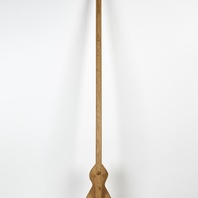
Viking Objects
Reproduction Shovel
A reproduction wooden shovel based on fragments found at York.
Read More
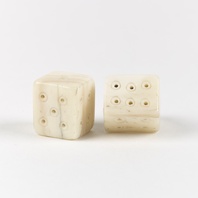
Viking Objects
Reproduction Bone Dice
A pair of reproduction bone dice. Viking Age dice were usually rectangular rather than cubes, making it harder to roll the numbers on the ends of the dice. They do not follow the modern convention of having the numbers on opposite faces add up to seven. We do not know what games the people played with dice in this period, but it has been suggested that dice might have been used as part of playing board games like hnefatafl.
Read More
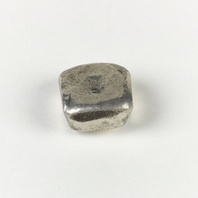
Viking Objects
Reproduction Square Weight
A square lead alloy weight based on one found in Nottinghamshire. It weighs 20g.
Read More
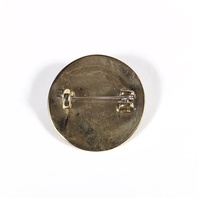
Viking Objects
Reproduction Silver Terslev Brooch
Terslev style, where Scandinavian ring-chain patterns are the main decorative component, is a subcategory of the Borre style and takes its name from the silver hoard discovered in Terslev, Denmark. The decoration comprises a series of ring-knots related to the Borre ring-chain. The Terslev style occurs mainly on brooches and pendants, including both high-quality gold and silver jewellery as well as lower-end base metal items. The cast-base metal jewellery, such as those made of copper alloy, were intended to imitate the higher-end gold and silver jewellery, and often employed techniques such as gilding to achieve this. The Terslev designs that occur in England extend the repertoire by introducing new Scandinavian motifs hitherto unrecorded in Scandinavia. For more information on Scandinavian jewellery in England check out our blog: Brooches, Pendants and Pins: Scandinavian Dress Accessories in England.
Read More
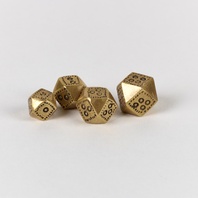
Viking Objects
Reproduction Polyhedral Weights
A group of four polyhedral weights of a type that is common throughout the Viking diaspora. This example has fourteen sides and four dots on each of the rectangular sides. These weights were adopted by the Vikings from Middle Eastern examples and appear to have become a de facto weight standard for traders.
Read More
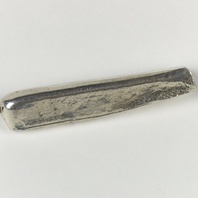
Viking Objects
Reproduction Silver Ingot
A white metal reproduction of a Viking Age silver ingot. Silver goods and coins might be melted down into ingots for ease of carrying.
Read More
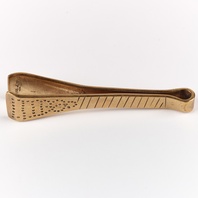
Viking Objects
Reproduction Tweezers
Tweezers were an essential toilet item for the Vikings and most people would have had their own. They could be highly decorated as were many personal possessions. They would have been carried suspended from a brooch or belt.
Read More
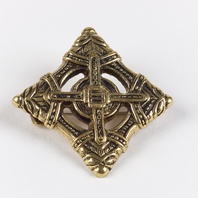
Viking Objects
Reproduction Lozenge Brooch
A copper alloy lozenge brooch in the Borre style based off a find in Lincolnshire. This type of brooch was common throughout the Danelaw in the Viking Age and was used as an accessory by women who wore Scandinavian dress. Scandinavian brooches came in a variety of sizes and shapes which included disc, trefoil, lozenge, equal-armed, and oval shapes. The different brooch types served a variety of functions in Scandinavian female dress with oval brooches typically being used as shoulder clasps for apron-type dresses and the rest being used to secure an outer garment to an inner shift. Anglo-Saxon brooches do not match this diversity of form with large disc brooches being typical of ninth century dress styles with smaller ones becoming more popular in the later ninth and tenth centuries. However, since disc brooches were used by both Anglo-Saxon and Scandinavian women they are distinguished by their morphology. Scandinavian brooches were typically domed with a hollow back while Anglo-Saxon brooches were usually flat. Moreover, Anglo-Saxon brooches were worn singly without accompanying accessories.
Read More
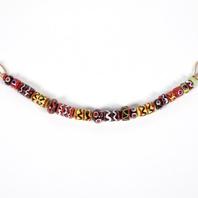
Viking Objects
Reproduction Baltic Glass Beads
This glass-bead set is based on originals from Ribe/Hedeby and the Baltic and were meant to be worn between oval brooches. Glass beads were a coveted item with some being imported from as far away as the Middle East. They were manufactured by specialised artisans who would heat various coloured glass rods over a furnace and melt the glass onto a metal stick to form different shaped beads.
Read More
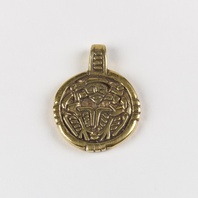
Viking Objects
Reproduction Pendant with an Odin Motif
This reproduction of a cast silver, gilded pendant featuring an image of a one-eyed figure with two birds has been interpreted as Odin and his two ravens, Huginn and Muninn. The original pendant was found at Winteringham, Lincolnshire. There are a number of close parallels which establish the wide currency of this subject group. These include numerous examples from Russia and two from Sweden, including some with silver gilding. A silver pendant with a related, but distinct design is known from Sjælland, Denmark.
Read More
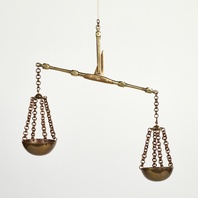
Viking Objects
Reproduction Scales
Scale pan set in copper alloy based on fragments of an arm from Cromwell, Nottinghamshire (DENO 0619F7), a pivot from Northope, Lincolnshire (NLM 6A2893), and a suspension arm and pans based on originals from York and St Peter’s Street, Northampton. Scales were a common commercial tool and would have been an important part of any exchange whether using a monetary system or a bullion system such as the one that existed in Viking-occupied areas of England.
